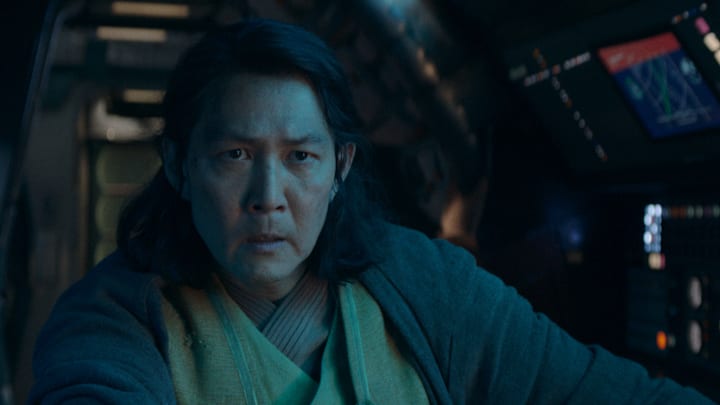When we talk about the Jedi, most of us think of the stern, stoic warriors from the prequels or the wise, battle-scarred sages post-Empire. But the Jedi of the High Republic, like Master Sol from The Acolyte, are a different breed entirely.
Allow me to explain.
These Jedi are at the height of their power, and they’ve got a very different approach to emotions and the Force compared to their later counterparts - they allow themselves to feel emotions so they may understand why and what they're feeling before being at peace with it all and letting it go.

The High Republic era, set around 200 years before the events of Star Wars Episode I: The Phantom Menace, is a time of peace and prosperity for the galaxy. The Jedi are still the guardians of this peace, but there's a key difference: they’re not the emotionally distant monks we see in the prequels. Instead, they acknowledge and embrace their emotions, understanding that feelings are a natural part of being sentient beings.
Master Sol, beautifully portrayed by Lee Jung-jae, exemplifies this difference perfectly.
In The Acolyte, Master Sol is not afraid to show his fear. This is a huge shift from the Jedi of the prequel era, who are taught to suppress and deny their emotions to avoid the pull of the dark side. Sol's openness about his emotions is a breath of fresh air and adds a layer of humanity to his character. Perhaps the most important bit is that he recognizes that feeling fear doesn’t make him weaker - it makes him more relatable and, in a way, stronger. By confronting his fear, he can master it, rather than let it control him.
The High Republic Jedi have a much healthier relationship with their emotions compared to the Jedi of the prequels. They follow the same Jedi Code, but they do so with a deeper understanding of what it means to be emotionally aware. They know that love, grief, fear, and even joy are part of life. Instead of running from these feelings, they face them head-on. This doesn’t mean they let their emotions run wild, but they don’t fear them either. They strive for true balance, recognizing that acknowledging emotions is key to mastering them. This era also sees the Jedi Order at its most idealistic. The galaxy is relatively stable, and the Jedi are more like knights of old, venturing out to solve problems and help those in need. They are not yet the war generals we see during the Clone Wars, nor are they the hidden rebels fighting against the tyranny of the Empire. They are peacekeepers, explorers, and philosophers, deeply connected to the Force and the people of the galaxy.

In contrast, the Jedi of the prequels are heavily influenced by the looming threat of the Sith and the rising tensions within the Republic. They become more rigid, dogmatic, and fearful of attachments and emotions. This fear always leads to their downfall, as they fail to see the darkness growing within their ranks, culminating in the tragic events of Order 66. Post-Empire, the Jedi we see in characters like Luke Skywalker and Rey are more about rediscovering and rebuilding what was lost. They are trying to piece together the wisdom of the past while forging a new path. Luke’s struggle with his emotions and attachments is a central theme in his journey, and Rey’s acceptance of her emotions and lineage becomes crucial in her battle against the dark side. But the High Republic Jedi, including Master Sol, offer a glimpse of what the Jedi could be at their best. They are not afraid to feel, to connect, and to live fully within the Force. This makes them more relatable and, arguably, more effective guardians of peace. They remind us that the Jedi are not just warriors - they are also teachers, explorers, and above all, beings who strive for harmony within themselves and the galaxy.
The Acolyte explores this fascinating period, showing us a time when the Jedi Order was more open, more human, and more connected to the people they served, giving us a much-needed refreshing take on the Jedi, and Master Sol’s character is at the forefront of this new portrayal. His willingness to embrace his fear and emotions adds a rich, humanistic layer to the Jedi narrative, making the High Republic era a compelling chapter in the Star Wars saga.
Master Sol, as well as the exploration of the High Republic period, is here to show us that being a Jedi is not just about wielding a lightsaber and using the Force, but also about understanding and embracing what it means to be truly alive.
Don't forget to tune in to Disney+ next Tuesday, June 11th for the third episode of this incredibly refreshing and entertaining series, The Acolyte.
